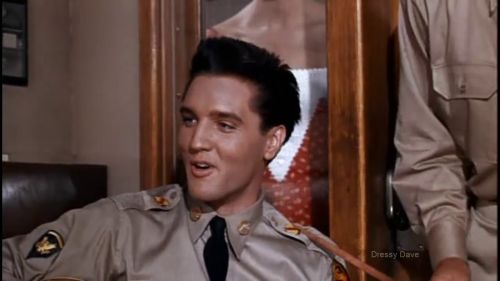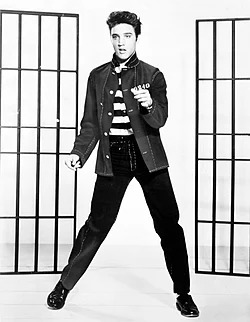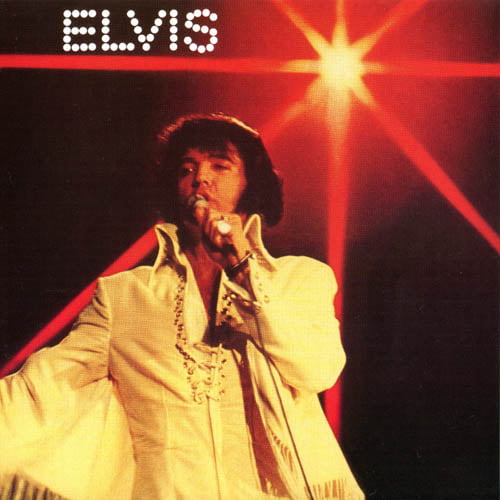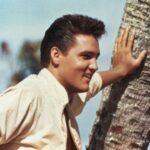
GI Blues
– See the new Elvis!-
(Part 8)
By Mariusz Ogieglo
Tonight’s All Right For Love
The above song (“Tonight’s Is So Right For Love“), as I mentioned earlier, was based on the old, 19th-century melody “Barcarolle” by the French composer, Jacques Offenbach. However, as it turned out, in Europe this song was still protected by copyright (unlike in the USA) and its use in a film or on an album distributed outside the United States became simply impossible.
Due to the above, it was necessary to find, in the shortest possible time, an appropriate, stylistically similar composition that would replace “Tonight’s Is So Right For Love” both in European cinemas and on the local release of the soundtrack album.
So Sid Wayne and Abner Silver – the creators of “Tonight’s Is So Right For Love” – ??were asked for help in writing it, and in cooperation with Hal Wallis and musical director Joseph Lilley, they came up with a new song. This time, however, the authors took inspiration for its melody from the ” naturally copyright-free ” composition “Geshicten auf dem Wienerwald” by Johann Strauss II. ” By making minor changes to the text and then giving it a slightly different title – ‘Tonight’s All Right For Love’ (although in the original version it was ‘Vienna Woods Rock’n’Roll’) they both fulfilled the task entrusted to them ,” emphasized Ernst Jorgensen in his book.
ELVIS PRESLEY RADIO 24h
The song was recorded during another recording session, this time organized in the Hollywood Radio Recorders studio, well known to Elvis, on Friday, May 6, 1960.
The beginning of the recordings, which, as before, included guitarists Scotty Moore and Hilmer J. ‘Tiny’ Timbrell, bassist Ray Siegel, keyboardist Dudley Brooks, drummers – DJFontana and Bernie Mattinson and accordionist Jimmie Haskell, is scheduled for one o’clock in the afternoon. Vocal accompaniment on this day was again provided by The Jordanaires (the band’s Neal Matthews also played guitar and Hoyt Hawkins played tambourine), and the technical supervision of the session was provided by Joseph Lilley and sound engineer Thorne Nogar. “ With Thorne Nogar at his side, Elvis felt much more comfortable and much more confident ,” wrote Ernst Jorgensen in Platinum. A Life In Music.” Some sources also say that Hal Wallis was also present in the studio that day.
The main purpose of Presley’s May visit to the Radio Recorders studio was primarily to record the above-mentioned “Tonight’s All Right For Love” and to refine several songs recorded during the April sessions at 6363 Sunset Boulevard.
And so the first few minutes were devoted to recording another fast (sometimes also described as acoustic) version of the Sid Wayne and Sherman Edwards lullaby, “Big Boots” and a new master of the song “Shoppin’ Around“. The changes introduced, especially in the case of the latter, were almost immediately audible. ” Scotty Moore had his moment on ‘Shoppin’ Around,’ playing an intro that almost sounded like a SUN record for a few seconds ,” wrote Collin Escott. Ernst Jorgensesn, in turn, noted that: ” By adding a little echo, Nogar almost perfectly combined all the elements that made the songs finally sound like they were from an Elvis Presley album. In an instant, vocals that had previously sounded flat and dry in the RCA studio came to life .

Work on the film material went much more smoothly this time than just a few days earlier, as best evidenced by the ballad “Pocketful Of Rainbows“, which was completed on Friday afternoon after just two short takes (while it was rehearsed nearly thirty times in April).
Unfortunately, that happy, joyful and creative atmosphere disappeared from the studio shortly after playing the tenth rehearsal of “Frankfort Special“, which this time was not only ” brought down to a more human pace ” but whose new arrangement Scotty Moore and DJ Fontana based on another Elvis hit, ” Mystery Train” launched during his cooperation with the SUN label.
The reason for this sudden change in mood turned out to be a provision in the contract that guaranteed the musicians a seventy-five-minute break after the first six hours of work. Elvis, who wanted to finish recording as quickly as possible and return home, thought it was too long. “ I was in good shape. It was a good time for a break of ten minutes at most ,” he lamented. Ultimately, however, he had to take a break like the rest of the band members.
He returned to work on the last pieces only after 8 p.m. and, as Ernst Jorgensen noted, almost immediately ” he began to show signs of fatigue .”
Some people who worked with him at that time even remembered that the singer, wanting to clearly emphasize his dissatisfaction with the forced rest, deliberately ruined the first few rehearsals of “Tonight’s All Right For Love“. Fortunately, he later gave up a bit and the song was recorded on the ” very good ” nineteenth take (in fact, the song was composed of the seventeenth take of the entire song and the second take of the so-called working part of the ending).
“ You see, all my work with Elvis, you know… his group members didn’t read music at all. All the songs we did together were developed by me and then I had to explain to them what was what ,” keyboardist Dudley Brooks recalled in an interview. “ I had to discuss it with them. That was my main responsibility when working with Elvis – to learn all the songs and then prepare them for recording .
And it was this musician who created another arrangement for the children’s lullaby “Big Boots“, which turned out to be the final recording of the May session. Completed after another ten rehearsals*, Sherman and Edwards’ composition finally resembled a children’s song, which one website summed up as ” gently sung in that majestically engaging voice .”
GI BLUES – SEE THE NEW ELVIS

Before leaving the studio, the musicians recorded an instrumental version of “Tonight’s All For Love“, which a few weeks later was included in one of the scenes of the film being made.
Officially, around 10 p.m., recording of the material for the comedy “GIBlues” ended.
Recounting the songs in his new film to The New York Times journalist Murray Schumach a few weeks later, Elvis noted that only ” three or four of them were pure rock ‘n’ roll. Then I did some mid-tempo songs and some ballads .”
- During a recording session on May 6, 1960, Elvis recorded six rehearsals of “Big Boots” and four working cuts of it. However, to create the master version, i.e. the one used on the album, the fourth approach to the song from April 28, 1960 and the fourth attempt of the above-mentioned working fragment (the so-called insert) from May 6, 1960 were used.
Article written and provided by Mariusz Ogieglo, EP Promised Land (Poland) http://www.elvispromisedland.pl/
If you want to visit more articles about the life of Elvis Presley, enter the following Elvis Radio 24h link: https://elvisradio24h.com/tag/articles Thanks TCB
We remind you that you can also listen to Elvis Radio 24 hours on your mobile phone by downloading our free applications for Android in the Play Store https://play.google.com/store/apps/details?id=com.icreo.elvisradio24h1, and for iPhone in your Apple Store https://apps.apple.com/app/elvis-radio-24h/id6444257119. Thank you very much!!…








